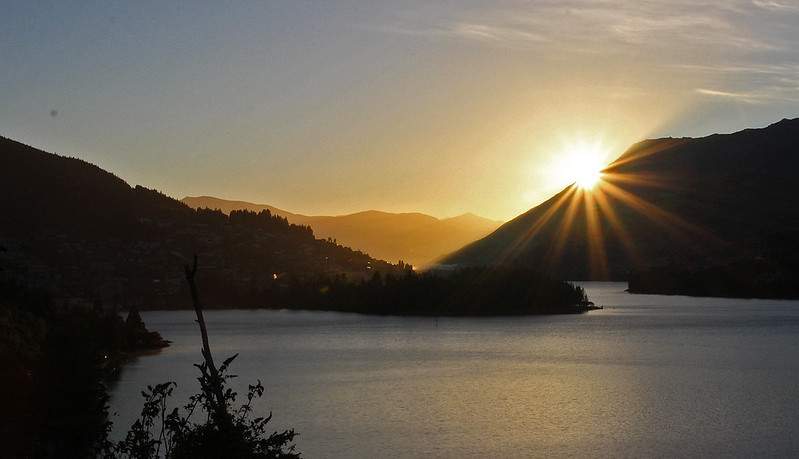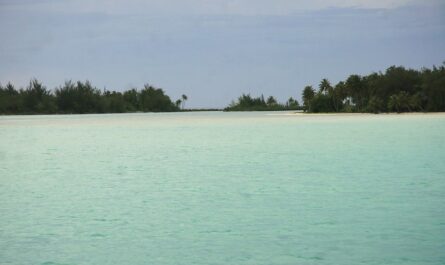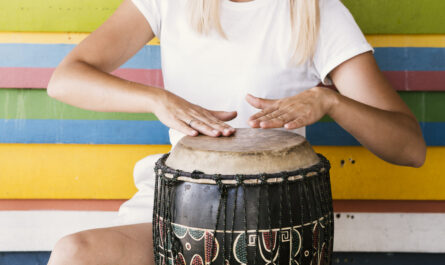The Māori people, indigenous to New Zealand (Aotearoa), possess a rich cultural heritage that has endured for centuries. Their customs, traditions, and spiritual practices have been passed down through generations, often expressed through festivals and celebrations. These festivals are not just occasions for joy and community gathering but also play a significant role in preserving and strengthening the Māori cultural identity. Rooted in their connection to nature, ancestors (whakapapa), and the spiritual realm, Māori festivals reflect a deep respect for the past while providing a vibrant space for the continuation of their culture in the modern world.
In this comprehensive article, we will explore some of the most important Māori festivals, their significance, and how they continue to shape the cultural landscape of New Zealand. From Matariki, the Māori New Year, to the traditional kapa haka performances, these celebrations not only honor the Māori way of life but also serve as an essential reminder of the resilience and vitality of indigenous cultures.
1. The Importance of Festivals in Māori Culture
Māori festivals are deeply intertwined with the rhythms of nature, the seasons, and the celestial cycles. Unlike the Western concept of time, which is often linear, Māori understanding of time is cyclical, marked by recurring natural events such as the phases of the moon, the movement of the stars, and the changing seasons. Festivals are seen as opportunities to reconnect with ancestors, reaffirm spiritual beliefs, and foster community bonds.
The word “festival” in the Māori language can be expressed through terms like “hui” (a gathering or assembly) or “hakari” (a feast). Each festival or celebration has specific cultural and spiritual connotations, often linked to seasonal events, harvests, the remembrance of ancestors, or important milestones in the Māori calendar. These events are integral in keeping the community connected and ensuring the continuity of traditions.
2. Matariki: The Māori New Year
Perhaps the most well-known festival in Māori culture is Matariki, the celebration of the Māori New Year. Matariki refers to the Pleiades star cluster, which reappears in the sky in late May or early June, signaling the start of the New Year. Traditionally, Matariki was a time to honor the dead, celebrate new life, and offer thanks for the harvest.
Matariki is deeply rooted in the Māori concept of whakapapa, or genealogy. During this time, people reflect on those who have passed away in the previous year and acknowledge their connection to their ancestors. It is also a time for planting new crops, ensuring that the land continues to provide sustenance for future generations.
Over the past few decades, Matariki has experienced a revival as both a national and cultural celebration in New Zealand. It is now recognized as a time for communities to come together, engage in cultural performances, storytelling, and traditional food preparation. Schools and local organizations host various events to teach the younger generations about Māori astronomy, mythology, and traditions.
Matariki is not only about looking back but also about looking forward, embodying the renewal of life, the promise of a prosperous harvest, and the continuity of Māori traditions. The festival has become a significant symbol of cultural pride and renewal for the Māori people.
3. Waitangi Day: Commemorating the Treaty of Waitangi
Another important cultural and political event in New Zealand is Waitangi Day, celebrated on February 6th each year. It marks the signing of the Treaty of Waitangi in 1840, an agreement between the British Crown and more than 500 Māori chiefs. The Treaty, known as Te Tiriti o Waitangi in Māori, is a foundational document in New Zealand’s history, establishing the framework for relations between the Crown and the indigenous Māori population.
Waitangi Day is observed as both a day of celebration and reflection. It is a national holiday, with ceremonies held across the country, most notably at Waitangi, where the Treaty was first signed. The day includes cultural performances, including kapa haka, speeches by political leaders, and debates on the ongoing relevance of the Treaty in contemporary New Zealand society.
For many Māori, Waitangi Day is a reminder of the injustices that followed the Treaty, particularly the confiscation of land and the marginalization of Māori culture and language. It is a day for peaceful protest and advocacy for Māori rights, as well as a platform for addressing grievances and promoting reconciliation.
Despite the complexities surrounding its history, Waitangi Day remains an essential part of Māori cultural and political life. It provides an opportunity for the nation to come together to reflect on its shared history and the ongoing efforts toward partnership and mutual respect between Māori and non-Māori New Zealanders.
4. Te Matatini: The Pinnacle of Kapa Haka
Te Matatini is one of the most important cultural events in the Māori calendar, dedicated to the art of kapa haka—Māori performing arts. Held biennially, this festival brings together the best kapa haka groups from across New Zealand and beyond, who compete in a highly prestigious and revered competition.
Kapa haka performances involve a combination of singing, dancing, facial expressions, and gestures, all of which convey cultural narratives, legends, and values. Performers wear traditional clothing, including cloaks, piupiu (flax skirts), and feathered headpieces, all of which are imbued with symbolic meaning. The performances are a powerful expression of Māori identity, pride, and cultural strength.
Te Matatini serves as a platform for preserving and promoting Māori language (te reo Māori) and traditional performing arts. It is an important space for intergenerational transmission of culture, with younger generations learning the history, stories, and songs of their ancestors. As a national event, Te Matatini also attracts a diverse audience, helping to foster greater appreciation of Māori culture across New Zealand.
In addition to the competition, the festival is also a celebration of Māori food, crafts, and community. Visitors can enjoy traditional Māori cuisine, such as hāngi (a meal cooked in an earth oven) and seafood, while also exploring stalls that showcase Māori art and craftsmanship.
5. Ngāruawāhia Regatta: Celebrating the Waikato River
The Ngāruawāhia Regatta is one of the oldest Māori festivals, first held in 1896, and is a celebration of the Māori connection to the Waikato River. The regatta takes place in the town of Ngāruawāhia, near the confluence of the Waikato and Waipā Rivers, a place of great cultural and historical significance for the Waikato-Tainui people.
The festival features traditional Māori canoe races (waka ama), kapa haka performances, and other water-based activities. The Waikato River holds deep spiritual meaning for the Waikato-Tainui people, symbolizing life, sustenance, and the ancestors who have lived along its banks for centuries.
The regatta is also an occasion to honor the Māori King, part of the Kingitanga movement, which was established in the 19th century to unify Māori tribes under a single sovereign leader. The Kingitanga has played a vital role in advocating for Māori rights and land restitution, and the regatta serves as a reminder of the ongoing importance of this movement in contemporary Māori society.
6. Pohutukawa Festival: Honoring the Māori Deity of Rebirth
The Pohutukawa Festival, celebrated in early summer (December), honors the pohutukawa tree, often referred to as the “New Zealand Christmas tree” due to its brilliant red flowers that bloom during the festive season. For Māori, the pohutukawa is deeply significant, as it is believed to be associated with the legendary ancestor Tāwhaki, who climbed to the heavens and fell back to Earth. It is also linked to the Māori god of the underworld and rebirth.
The festival involves community gatherings, tree planting events, and celebrations of Māori mythology and connection to nature. It is a reminder of the Māori belief in the interconnectedness of all living things, and the importance of preserving the environment for future generations.
7. The Hākari: Māori Feasting Traditions
Food has always been a central part of Māori celebrations, and the hākari (feast) is a key component of many festivals and significant events. These feasts often follow important ceremonies, such as weddings, funerals (tangi), and the naming of children. Traditionally, food for the hākari was cooked in a hangi, an earth oven where food is slow-cooked using heated rocks buried underground.
The preparation of the hākari is a communal affair, with members of the community contributing to the gathering and preparation of food. The sharing of food is seen as an essential act of hospitality (manaakitanga) and a way to strengthen social bonds.
In the past, hākari were elaborate affairs, often used to display wealth, status, and hospitality. Chiefs would host hākari to demonstrate their mana (authority and prestige), sometimes feeding entire villages or communities.
Today, while modern technology has changed the way food is prepared, the essence of the hākari remains. It continues to be a way to bring people together, honor significant life events, and celebrate Māori culture.
8. Tangi: The Māori Funeral Ceremony
While not a festival in the traditional sense, the tangi (funeral) is one of the most important gatherings in Māori culture. A tangi is a multi-day event that often takes place on a marae (communal meeting place), where the deceased is laid out for the community to pay their respects. The tangi involves speeches, songs, and rituals, all of which honor the life of the deceased and provide support for the grieving family.
Māori believe in the concept of wairua (spirit), which continues to exist after death. The tangi is a way to help the wairua transition to the spiritual realm, and it provides a space for the living to express their grief, share memories, and reaffirm their connections to one another.
9. The Enduring Legacy of Māori Festivals
Māori festivals are more than just celebrations; they are living embodiments of the Māori worldview, deeply connected to nature, ancestors, and the spiritual realm. These events play a vital role in preserving the language, traditions, and values of Māori culture. They also serve as powerful reminders of the resilience of indigenous peoples and their ongoing efforts to maintain cultural identity in a rapidly changing world.
In recent years, the revival of traditional Māori festivals, particularly Matariki and Te Matatini, has helped strengthen Māori identity and pride. These festivals also provide opportunities for non-Māori New Zealanders and international visitors to engage with Māori culture in meaningful ways.
As Māori continue to celebrate their heritage through festivals, they ensure that their culture remains vibrant, relevant, and connected to the natural cycles that have shaped their way of life for centuries.



